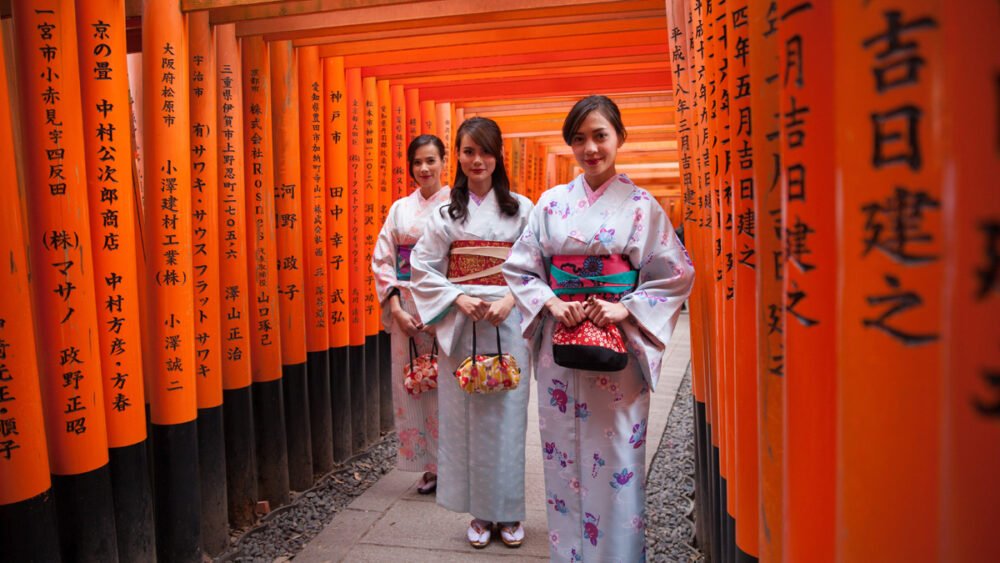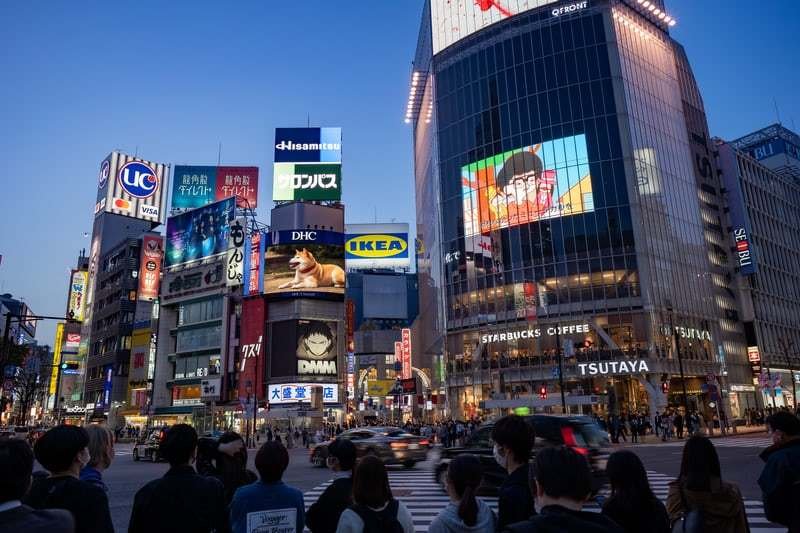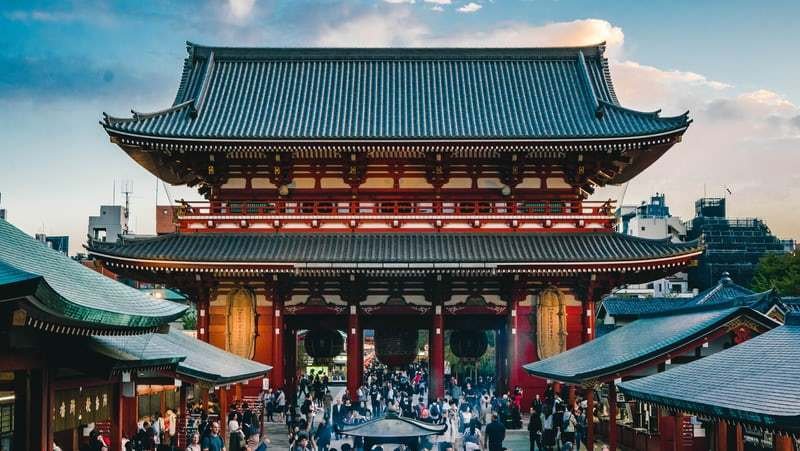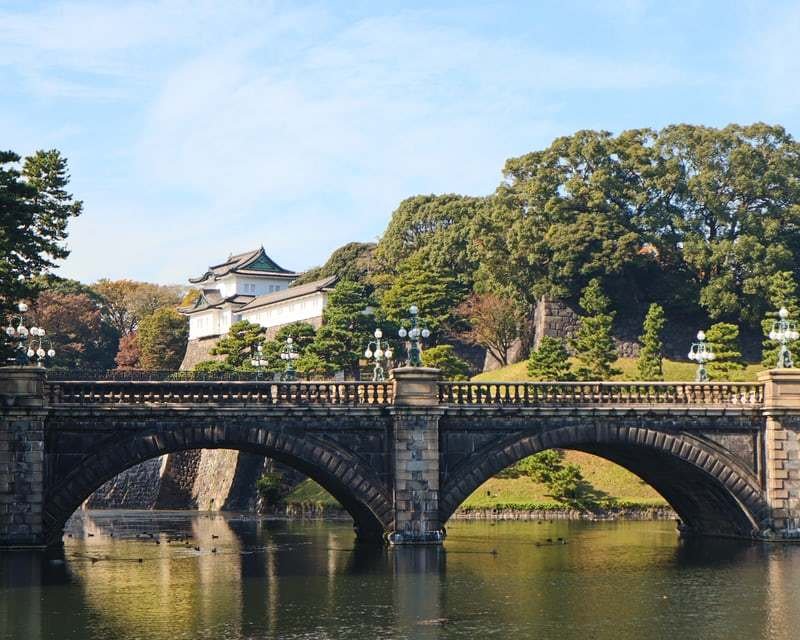Touring Around Tokyo: The Capital of the Land of the Rising Sun

Out of all of the countries that I’ve had the pleasure of knowing, loving and – luckily enough – visiting, Japan is by far the most enticing, multi-faceted and exciting cultural masterpiece I have ever known. Having spent nearly three weeks touring around the main island of Honshu, I have seen and experienced many a wondrous thing – architectural marvels, sacred ceremonies, tranquil landscapes and the simplicity of traditional-living.
Of all of the places I have visited in Japan (so far) one place that I feel somehow encompasses all of the above, and more, has to be Tokyo – the capital of the land of the rising sun. The culture, customs and the people leave me genuinely grateful that such a wonderful place still exists.
My trip left me madly in love, but of course with love there comes loss, and ever since leaving, I’ve yearned to return. So of course, until travel to Japan becomes possible again, my cure-all is to share my experiences of Tokyo and every beautiful feature that it has to offer with you – it’s incredible nightlife, stunning scenery, bustling shopping streets and tranquil temples. Hopefully this should tide us over, for now!
I hope to open your eyes to the marvel that is Japan, or, if you already share my love of Japan, then stick around to reminisce as I take you through my favourite places to visit, activities to do and sights to see – my guide to touring around Tokyo, just for you.
Western Tokyo
There’s only one word I can use to describe Western Tokyo, and that is buzzing. It’s the most modern, up-and-coming and lively area of Tokyo, and is popular with younger generations, but we’ll get to that later. Tokyo is composed of 23 special wards, spread across Western, Northern and Central Tokyo, and the two special wards that I find to be the most notable in Western Tokyo are Shibuya and Shinjuku.
Special Ward: Shibuya
Harajuku
Picture vibrancy, Japanese fashion-trends and bustling streets, and Harajuku is exactly that. The district is Tokyo’s epicentre of Japanese fashion favourites and popular culture. The best place to see this for yourself and to put your ‘most fashionable foot forward’ so to speak would be at Takeshita Dori Street. I can only liken my experience on entering Takeshita Dori Street to trying to pack myself into a tin of sardines… practically impossible! But I’d do it all over again. The street was a hive for youth culture, popular fashion and, admittedly, even a few fashion faux pas.
It’s buzzing atmosphere was nothing short of contagious: the streets are lined with small boutiques, second-hand clothes, and makeup and skincare stores – everything you could possibly need and more in the fashion and beauty realm, you will definitely find on Takeshita Street. If you think you’ve seen every fashion trend imaginable, Takeshita Street will show you otherwise, from the weird to the wacky and the wonderful. If you’re looking for a shopping experience like no other, head to Takeshita Street.
In stark contrast to Takeshita Street, only a short distance away, you can find Meiji Jingu shrine. Immersed in nature, with stretching woodland and gardens, it’s the perfect escape from the hustle and bustle of Harajuku. I was shocked when I re-emerged from the other end of Takeshita Street (luckily in one piece!) and found something that was such a world away so nearby.
The forest has defined walkways cutting through large forestry and holds an iconic torii gate made of cedar and standing 12m tall, blending in perfectly with its natural surroundings. You’ll also pass a wall of sake barrels lining part of the woodland path, each decorated in a unique design donated by sake brewers. Opposite, you can find a similar arrangement, but of wine barrels filled with French wine, showcasing Japan’s international relations.
Then comes the Meiji Shrine itself, a perfect example and possibly the most iconic of all Shinto shrines in Japan. The fact that it is concealed in the surrounding greenery keeps it grounded in its Shinto roots, and is the perfect place for you to feel grounded amidst the concrete jungle of Tokyo.
Shibuya
I’m sure you’ve heard the name, and I’m sure you know the place. The iconic zebra crossings stretch far and wide, overlapping one another in every direction. At the flicker of a green signal, you’ll find hundreds of people swarming to form a mass of human activity – that is Shibuya, specifically, Shibuya crossing.
Very much like Harajuku, Shibuya is a hive of activity, not just at the crossing, but within its streets. They’re lined with Pachinko parlours, a popular Japanese gambling/arcade game. Poking my head into these parlours left me with an image of rows of chairs filled with middle-aged men having finished their day at work, staring intently at the electronic screens – it was intriguing.
Similar to Harajuku, you’ll find stores for fashion, gadgets, tech and records – again, if you’re looking to shop till you drop in Japan, Shibuya should be on the top of your list.

Special Ward: Shinjuku
Shinjuku
Arguably best known for its nocturnal activity, Shinjuku is the nightlife district of Tokyo. Buildings are lined from head to toe with neon lights leading the way to the various activities you can try during your trip to Tokyo, the karaoke bars, movie houses, and pachinko parlours to name a few. You can also find more unique establishments native to Japan, such as robot restaurants – where you can experience colourful dancers, laser shows, robot acts and music whilst having your dinner; an experience like no other I dare say.
There’s also the red-light district in Shinjuku known as Kabuki-chō, where you’ll find a plethora of hostess bars, love hotels and all things deemed adult. I would advise you not to consider taking your kids along with you to explore this area!
Northern Tokyo
Now we move onto Northern Tokyo, which is the home of some of what is left of Tokyo’s older, original areas. It holds two of Tokyo’s major marvels: Senso-ji temple in Asakusa and Ueno Park in Ueno.
Special Ward: Taitō
Asakusa
Senso-ji temple is Asakusa’s biggest attraction. Being one of the most famous Buddhist temples in the country, it attracts both tourists and natives from near and far. Before you enter the temple, you’ll find yourself passing through the Kaminarimon, also known as the ‘Thunder gate’ – a large gateway with a huge red lantern and its archways dressed in red, green and gold.
You’ll then find yourself walking up Nakamise shopping street, lined with paper lanterns and housing multiple trinket stores and food vendors selling snacks and gifts galore. The second gate called the Hozomon, or ‘Treasure-House gate’ is the second gate leading to Senso-ji temple. It is equally as gorgeous as the thunder gate, and stands two stories high.
Once I eventually reached the temple (after browsing in all of the shops!) it was a sight to see. Its iconic red and gold architecture is spectacular and it remains to this day one of the most dazzling temples I’ve seen whilst in Japan.
Not too far away, you can find Tokyo Skytree Tower, the perfect place for you to gain 360 views of Tokyo. I’d personally recommend going at night – the views are incredible, showing the skyline ablaze with the nocturnal activities of Tokyo. The Skytree has two viewing decks, one at 150 meters and the other at 250 meters.
If you’re a fan of Studio Ghibli like I am, you’ll want to stick around the Skytree for more than just the views. Tokyo Skytree is home to one of just five official Studio Ghibli stores in Tokyo, and houses everything a Ghibli fan could possibly need (and more importantly, want!)
If you’ve been living under a rock, Studio Ghibli is a Japan based animation film studio that has created some of the world’s best cinematic masterpieces (I may be slightly biased) – the studio hones in on everyone’s inner child, telling wondrous, heartfelt tales that continue to spark the imagination in every way. I would highly recommend you watch some of their films if you haven’t already before touring around Tokyo.

Ueno
The Ueno district in the Taitō ward houses one of Tokyo’s largest and most gorgeous green spaces – Ueno Park.
Ueno Park is huge, and houses multiple attractions for those wanting to learn about and experience Tokyo. You’ll find several monuments and statues, which I won’t go into detail about in this post, but will instead leave that up to your personal interests. You can also find the Ueno Zoo within its grounds and several museums including the Tokyo Metropolitan Art Museum and the Tokyo National Museum – for those of you who may be history and art junkies, these might tickle your fancy.
If you go at the right time of year, you’ll be able to see the cherry blossoms in full-bloom in this gorgeous open space. Cherry blossom season is only short and happens during spring, so if experiencing Japan amongst the pinks and whites of cherry blossom season is something you’re looking to do, make sure you time your trip during the peak cherry blossom season to make sure you can fully immerse yourself in Tokyo in full bloom.
Central Tokyo
The heart of Tokyo, Central Tokyo is Japan’s business metropolis and is composed of three central wards: the Minato, Chiyoda and Chūō wards.
Special Ward: Chūō
Ginza
On your next trip to Tokyo, I urge you to check out the Kabuki-za. It is located in Ginza and is the main theatre for productions of the traditional Japanese drama form known as Kabuki. This is a mesmerising traditional theatrical display which combines dance and drama, with elaborate costumes and makeup worn by performers dating back hundreds of years. It is unlike anything you’ll experience in the Western world and the storytelling through the art of dance and expression is nothing short of breathtaking.
Special Ward: Minato
Shiba-Koen – Tokyo Tower
If one tower in Tokyo wasn’t good enough for you, then Tokyo Tower should be another one to tick off your bucket list. It’s iconic red and white striped lattice structure, which is inspired by the Eiffel Tower in France, makes it a difficult landmark to forget. It is Japan’s second tallest structure and has two observation decks you can visit, one at 150 meters and the other at 249.6 meters, letting you enjoy 360 views of central Tokyo and beyond.
Special Ward: Chiyoda
Akihabara
Electronic central – Akihabara is Tokyo’s centre for all things electronic. Steeped in tech and gadgets, it has developed an identity centred around its electronic shops and also around Japan’s Otaku culture – including anime and manga. Everywhere you walk in Akihabara you are surrounded by every type of electronic shop supplying every electronic possible – TVs, computers, phones and cameras to name a few. If gadgets and gizmos are up your street, Akihabara would definitely be worth a gander.
The Otaku culture in Japan has paved the way for certain establishments in places such as Akihabara to gain popularity, including Maid Cafes. The maid cafes involve servers dressing up as maids, a typically desirable experience for those native to Japan, but leaves the majority of others curious and confused by the prospect. Its role-play approach makes the typical server-customer relationship that we are all familiar with more interesting. If this is something that piques your interest, Akihabara would be the perfect place for you to go.
Chiyoda
In the Chiyoda district of the Chiyoda ward, you’ll find the residence of the current Emperor of Japan – Tokyo Imperial Palace. The majority of the grounds are open to the public for their leisure. The view of the palace shows its partially shrouded in the surrounding woodland and separated from the public by surrounding moats. The main view of the palace also encompasses Nijubashi Bridge, one of the two bridges used to enter the Palace grounds. It is a tranquil greenspace in Tokyo that remains perfectly preserved to this day.
It is possible to enter the inner grounds of the palace, which aren’t usually open to the public, but this is only on two days during the year: the 2nd of January and the 23rd of February (the Emperor’s Birthday). At these times you may even be able to see the Imperial Family, who make appearances on one of the palace balconies.

You’re definitely not short of things to do on your next trip to Tokyo. Whether you’ve read this article and, like me, have re-lived some of your fondest memories of your stay and travels in Tokyo, or, whether I’ve inspired you to add a new place to your bucket list for your next trip, the capital of the land of the rising sun is a spectacle in every way, shape and form, and it’s not a destination you’ll want to neglect.